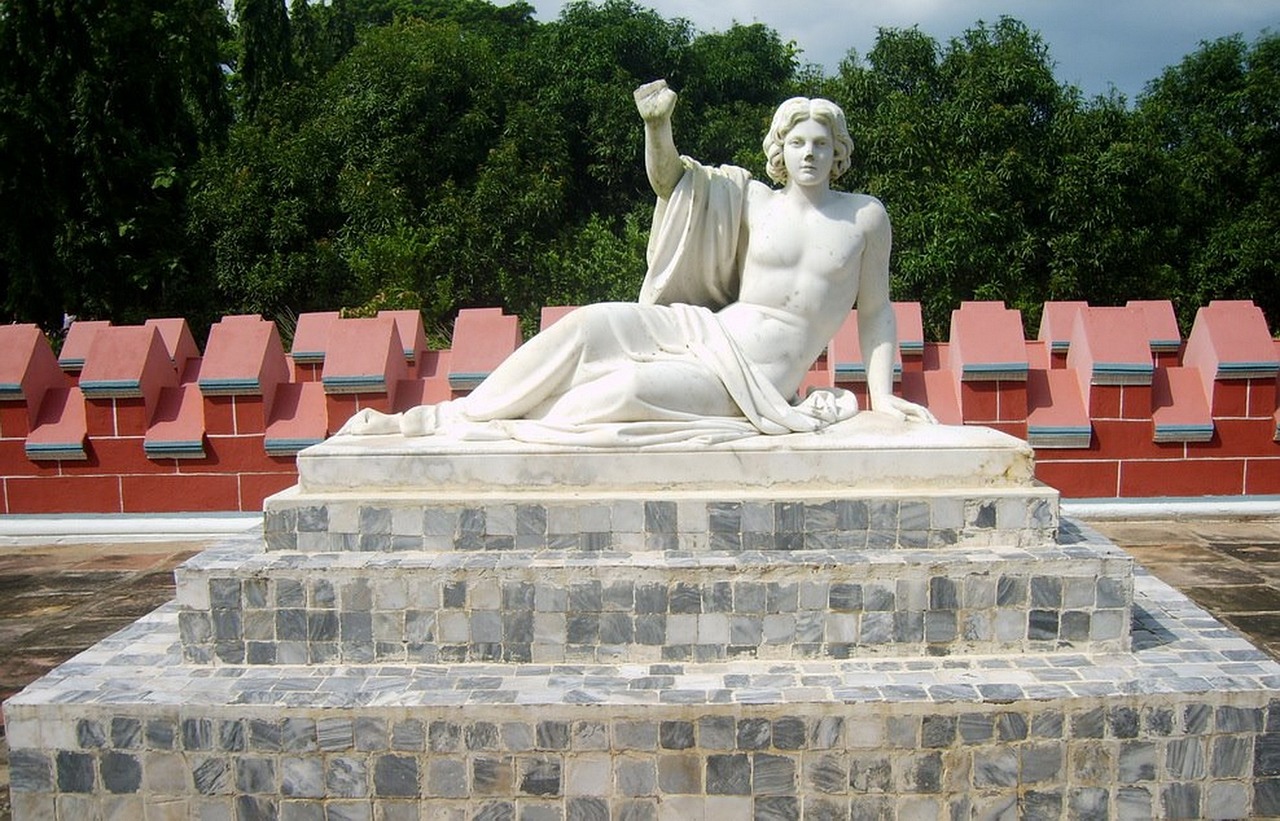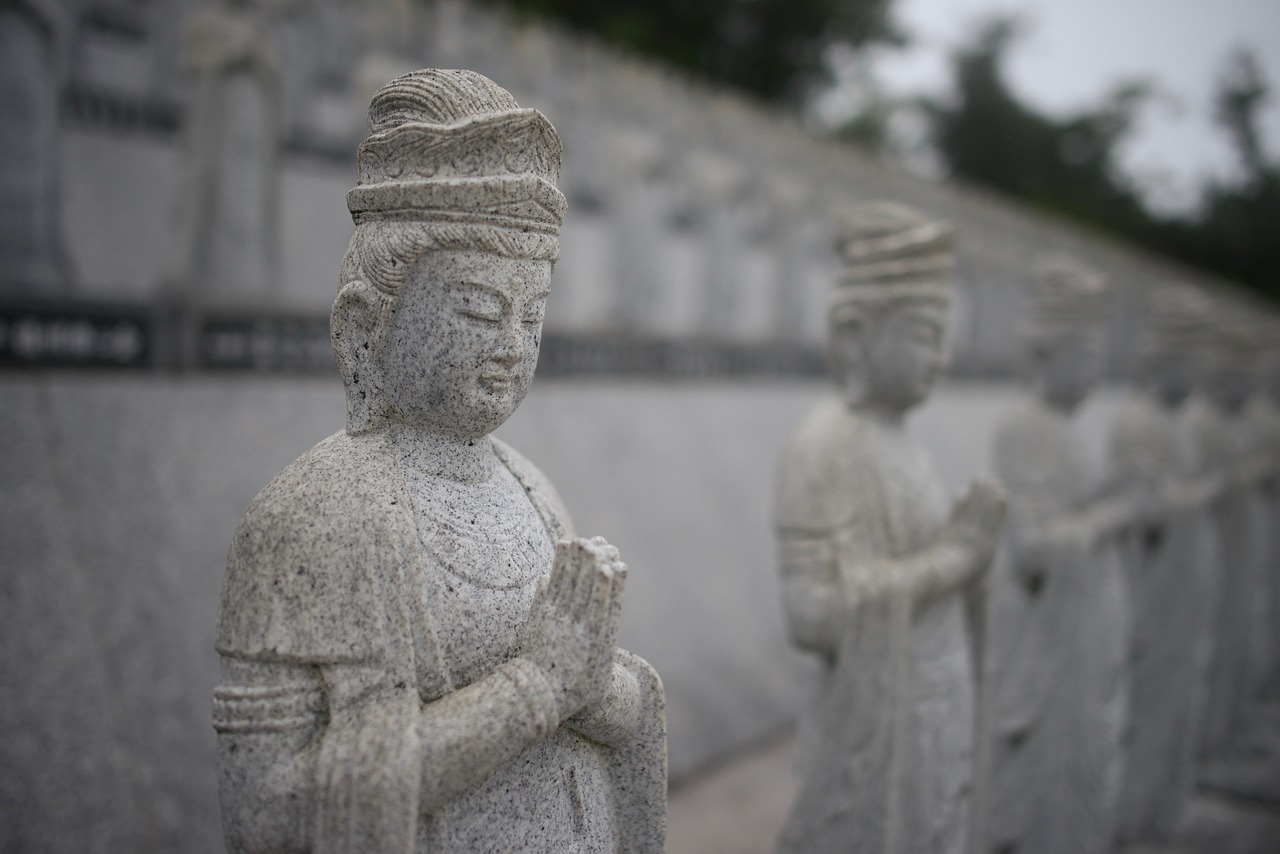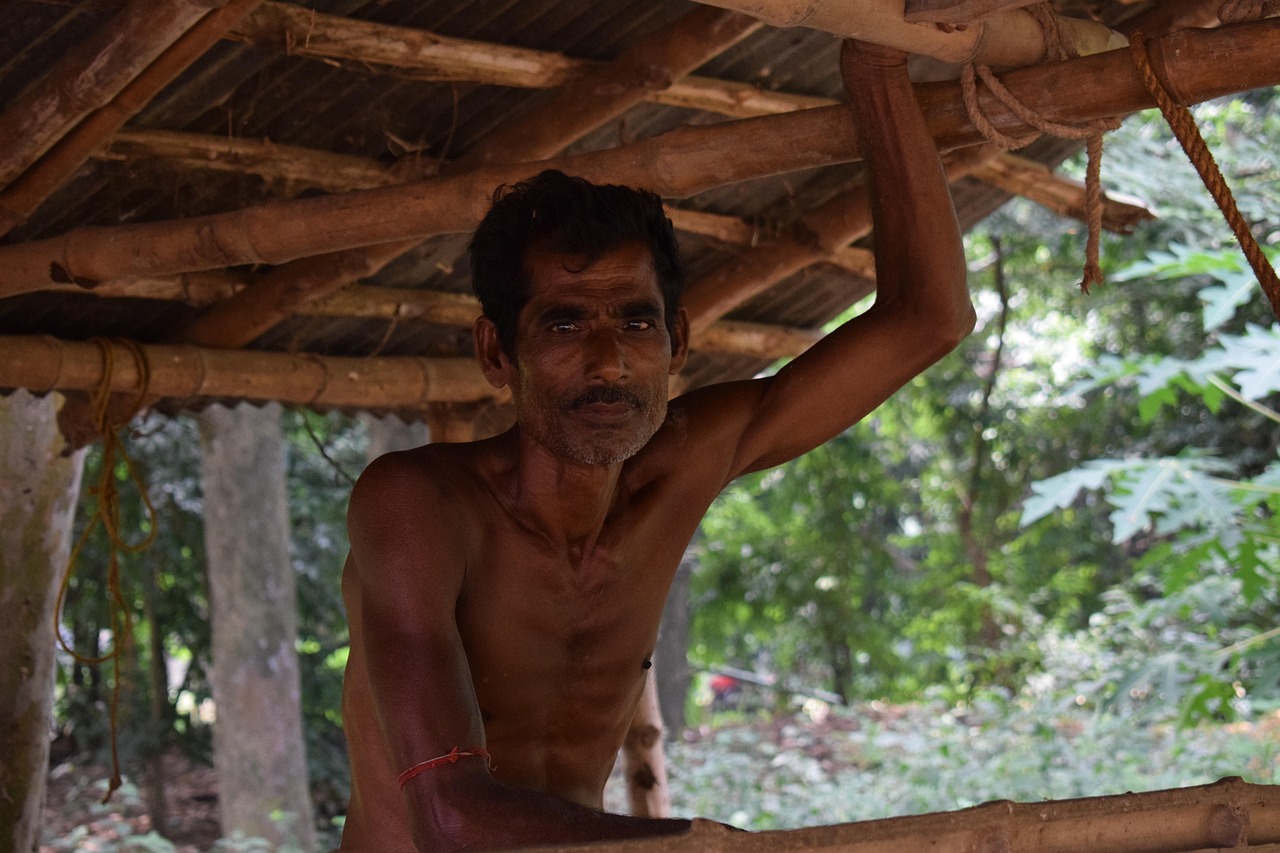This article delves into the rich cultural heritage of West Bengal and its profound influence on India’s identity. By examining its art, literature, festivals, cuisine, and more, we can appreciate how this vibrant region contributes to the broader Indian cultural landscape.
The Historical Context of West Bengal’s Culture
Understanding the historical backdrop of West Bengal is crucial to grasp its cultural evolution. The region has been shaped by various influences, including colonial rule, the struggle for independence, and the socio-political landscape that has continually transformed its identity.
Art and Craft Traditions of West Bengal
West Bengal is renowned for its vibrant art and craft scene. Traditional crafts such as terracotta, Kantha embroidery, and the intricate art of patachitra reflect the region’s creativity and skill.
- Terracotta Art: This form of art is prevalent in temples and rural settings, symbolizing the cultural and spiritual heritage of its people.
- Kantha Embroidery: Combining artistry with functionality, Kantha is often used to create quilts and household items, showcasing the resourcefulness of West Bengal’s women.
Literary Contributions of West Bengal
West Bengal has produced some of India’s most celebrated literary figures. The region’s literature reflects diverse themes and social issues, enriching the nation’s literary landscape.
- Rabindranath Tagore: The first non-European Nobel laureate in Literature, Tagore’s works encompass poetry, music, and philosophy, profoundly influencing Indian literature.
- Sarat Chandra Chattopadhyay: His novels resonate with the struggles and aspirations of common people, highlighting societal issues in early 20th-century India.
Festivals Celebrated in West Bengal
Festivals in West Bengal are vibrant and diverse, showcasing the region’s cultural richness. Celebrations such as Durga Puja and Poila Boishakh symbolize renewal and cultural pride among the Bengali people.
West Bengal’s Culinary Heritage
The culinary heritage of West Bengal features a delicious blend of flavors, with signature dishes like Macher Jhol (fish curry) and Mishti Doi (sweet yogurt) highlighting the region’s agricultural abundance.
Music and Dance Forms of West Bengal
Music and dance are integral to the cultural identity of West Bengal. Folk traditions and classical forms celebrate the region’s heritage, with Baul music and classical dances enriching the performing arts landscape.
Modern Influences and Globalization
In the age of globalization, West Bengal’s culture is evolving, integrating modern influences while preserving its rich traditions. The contemporary art scene is vibrant, with artists exploring new themes while staying rooted in their cultural heritage.
Conclusion
The culture of West Bengal is a tapestry of history, art, literature, and culinary excellence that shapes India’s identity. Its dynamic and evolving nature ensures that it remains a vital part of India’s cultural narrative.

The Historical Context of West Bengal’s Culture
Understanding the historical backdrop of West Bengal is essential for grasping its cultural evolution. This region has a rich and multifaceted history shaped by various influences, including colonial rule, the struggle for independence, and the complex socio-political landscape that has continuously molded its identity.
During the British colonial period, West Bengal emerged as a crucial center for political and cultural movements. The city of Calcutta (now Kolkata) became the capital of British India, leading to significant urban development and cultural exchanges. This era saw the rise of numerous intellectuals and reformers who challenged traditional norms and advocated for social change, laying the groundwork for the Indian independence movement.
Post-independence, West Bengal faced numerous challenges, including partition, which led to the migration of millions and a reshaping of its demographic landscape. The socio-political upheaval during this time resulted in a cultural renaissance, with a focus on literature, art, and music that reflected the struggles and aspirations of its people.
Moreover, the influence of local traditions and global interactions has enriched West Bengal’s cultural fabric. The state has been a melting pot of various religions, languages, and customs, contributing to its unique identity within the broader Indian context. Festivals, literature, and art forms in West Bengal often embody a blend of traditional and modern elements, showcasing the resilience and adaptability of its culture.
In conclusion, the historical context of West Bengal is not just a tale of past events; it is a living narrative that continues to shape the region’s cultural identity. By understanding this backdrop, one can appreciate the richness of West Bengal’s contributions to India’s diverse cultural landscape.
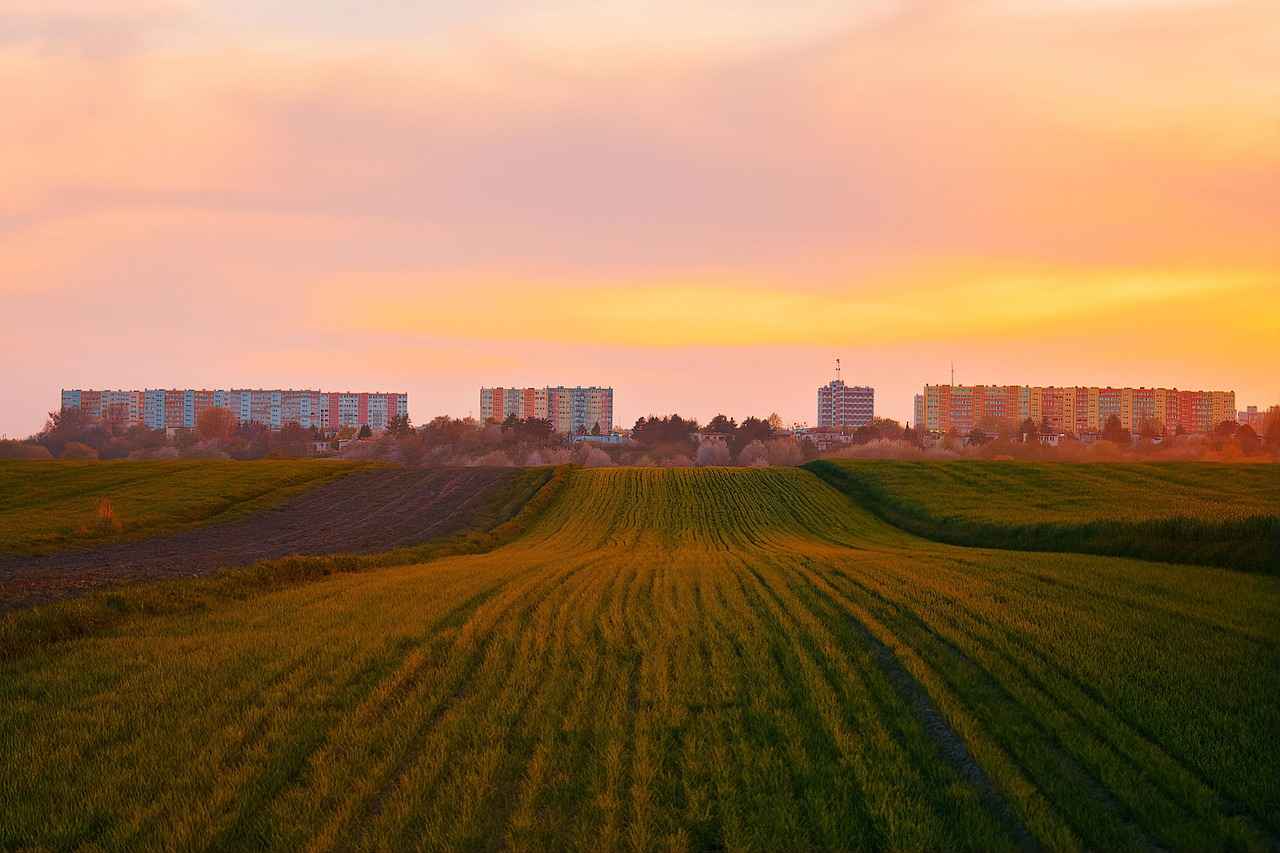
Art and Craft Traditions of West Bengal
are a vibrant tapestry that reflects the region’s rich cultural heritage and artistic prowess. This article delves into the diverse array of traditional crafts that define West Bengal’s artistic identity, showcasing the skills and creativity of its artisans.
West Bengal is renowned for its vibrant art and craft scene, which includes terracotta, Kantha embroidery, and the intricate art of patachitra. These traditional crafts not only demonstrate the region’s creativity and skill but also serve as a medium for storytelling, cultural expression, and community identity.
| Craft | Description | Significance |
|---|---|---|
| Terracotta | Clay art often found in temples and rural areas. | Symbolizes cultural and spiritual heritage. |
| Kantha Embroidery | Traditional quilts and household items created by stitching layers of fabric. | Represents the resourcefulness of Bengali women. |
| Patachitra | Scroll paintings that depict mythological narratives and folk tales. | Reflects the storytelling tradition of Bengal. |
Terracotta art in West Bengal is particularly significant, often used to adorn temples and public spaces. The intricate designs narrate stories from local folklore and religious texts, making it a vital part of the region’s cultural tapestry. Today, artisans continue to innovate, ensuring that this ancient craft remains relevant in contemporary society.
Kantha embroidery is another hallmark of West Bengal’s craft tradition. Originally a means of repurposing old sarees, this craft has evolved into a celebrated art form. The vibrant patterns and motifs often tell personal stories, making each piece unique. This craft not only showcases the artistic talent of women in the region but also highlights their role in preserving cultural traditions.
Lastly, patachitra is a traditional painting style characterized by its intricate details and vibrant colors. These paintings often depict scenes from mythology and local folklore, serving as a medium for storytelling. The art form has gained international recognition, showcasing the rich narrative tradition of West Bengal.
In conclusion, the art and craft traditions of West Bengal are not merely aesthetic pursuits; they are a reflection of the region’s history, culture, and identity. By preserving these crafts, West Bengal continues to contribute to India’s diverse cultural landscape.
Terracotta Art
in West Bengal is a stunning manifestation of the region’s rich craftsmanship and cultural heritage. This ancient art form, primarily made from clay, is not only a testament to the skill of local artisans but also serves as a vital link to the spiritual and cultural narratives of the Bengali people.
Traditionally, can be found adorning the walls of temples, rural homes, and public spaces, showcasing intricate designs that often depict mythological stories, rituals, and everyday life. The vibrant colors and detailed craftsmanship reflect the deep connection between the artisans and their cultural roots.
One of the most notable aspects of terracotta art is its historical significance. This art form has been used for centuries to narrate the rich tapestry of local traditions, beliefs, and stories. Each piece of terracotta work tells a story, often illustrating scenes from Hindu mythology or local folklore, thus preserving the region’s cultural identity.
In contemporary times, the relevance of terracotta art has not diminished. Modern artisans are innovating while staying true to traditional techniques, creating pieces that resonate with current aesthetics. This blend of the old and new ensures that terracotta art remains a dynamic part of West Bengal’s cultural landscape.
Moreover, terracotta art plays a crucial role in community engagement and tourism, attracting visitors who seek to understand the cultural heritage of West Bengal. Workshops and exhibitions are frequently organized, allowing tourists and locals alike to appreciate and participate in this beautiful craft.
In conclusion, terracotta art in West Bengal is not merely a decorative craft; it is a profound expression of the region’s identity, history, and spirituality. As artisans continue to adapt and innovate, this ancient form of art will undoubtedly remain a cherished part of West Bengal’s cultural narrative.
Historical Significance
The historical significance of terracotta art in West Bengal is profound, as it serves as a vital medium for storytelling and the preservation of local traditions. This ancient craft reflects the unique cultural identity of the region, encapsulating its rich history and the lives of its people.
Terracotta art can be traced back to ancient times, where it was primarily used in the construction of temples and in rural architecture. The intricate designs and motifs found in terracotta sculptures often depict mythological stories, local folklore, and daily life, making it a visual narrative of the community’s heritage. Each piece tells a story, connecting the past to the present and providing insight into the values and beliefs of the people.
| Aspect | Details |
|---|---|
| Craftsmanship | Terracotta artisans employ traditional techniques passed down through generations, showcasing their skills in shaping and firing clay. |
| Symbolism | Many terracotta artworks symbolize fertility, prosperity, and the connection between humans and nature. |
| Cultural Festivals | Terracotta art is prominently featured during local festivals, enhancing the cultural vibrancy of the celebrations. |
The of terracotta art extends beyond aesthetics; it serves as a cultural archive, preserving the stories and traditions of West Bengal’s diverse communities. As artisans continue to innovate, they blend traditional techniques with contemporary themes, ensuring that terracotta art remains relevant in modern society. This evolution not only honors the past but also invites new generations to engage with their cultural heritage.
In conclusion, the historical significance of terracotta art in West Bengal is a testament to the region’s rich cultural tapestry. It provides a window into the lives of its people and their enduring traditions, making it an invaluable aspect of India’s artistic legacy.
Contemporary Relevance
In the vibrant tapestry of West Bengal’s cultural landscape, terracotta art stands out as a testament to the region’s rich heritage and evolving identity. Today, this ancient craft is not merely a relic of the past; it has been revitalized by talented artisans who are blending traditional techniques with modern aesthetics. This dynamic fusion ensures that terracotta art remains relevant in contemporary culture, appealing to both local and global audiences.
Artisans are increasingly experimenting with innovative designs and contemporary themes, creating pieces that resonate with today’s sensibilities. This evolution is visible in various forms, from decorative items to functional art, such as home decor and jewelry. By incorporating vibrant colors and modern motifs, artisans are not only preserving their craft but also attracting a younger generation who appreciates the blend of tradition and modernity.
The significance of terracotta art extends beyond aesthetics; it plays a crucial role in the cultural identity of West Bengal. Artisans often draw inspiration from local folklore, mythology, and the natural environment, embedding stories and cultural narratives into their creations. This storytelling aspect of terracotta art allows it to serve as a bridge between generations, connecting the past with the present.
Moreover, the global appreciation for handmade crafts has opened new avenues for these artisans. With the rise of e-commerce and social media, terracotta art from West Bengal is gaining visibility on international platforms, allowing artisans to reach a broader audience. This exposure not only helps in sustaining their livelihoods but also promotes cultural exchange and understanding.
In conclusion, the of terracotta art in West Bengal is a shining example of how traditional crafts can adapt and thrive in modern times. As artisans continue to innovate while honoring their heritage, terracotta art will undoubtedly remain a significant part of West Bengal’s cultural identity, enriching both local communities and the global art scene.
Kantha Embroidery
is not merely a craft; it is a vibrant expression of the cultural heritage of West Bengal. This traditional art form, which originated as a practical way to repurpose old sarees and cloth, has evolved into a symbol of creativity and resourcefulness among the women of the region. The intricate stitching techniques employed in Kantha create beautiful patterns and designs that are both functional and aesthetically pleasing.
The history of dates back centuries, with roots in rural Bengal where women would gather to stitch together layers of fabric, often creating quilts for warmth. Over time, these quilts transformed into stunning pieces of art, showcasing intricate motifs that reflect the local flora, fauna, and daily life. Today, Kantha is widely used in various household items, including bedspreads, cushion covers, and wall hangings, making it a versatile addition to modern decor.
One of the most significant aspects of Kantha embroidery is its cultural significance. Each piece tells a story, often depicting scenes from Bengali folklore or the everyday lives of its people. This storytelling aspect not only preserves the cultural narratives of West Bengal but also promotes the skills and creativity of local artisans. As a result, Kantha has gained recognition both nationally and internationally, contributing to the economic empowerment of women in the region.
| Key Features of Kantha Embroidery | Description |
|---|---|
| Technique | Utilizes running stitch to create intricate designs. |
| Materials | Typically made from old sarees or cotton fabrics. |
| Designs | Includes motifs of nature, animals, and daily life. |
| Functionality | Used for quilts, home decor, and fashion items. |
In conclusion, Kantha embroidery is a remarkable blend of artistry and practicality, showcasing the rich cultural heritage of West Bengal. As it continues to evolve, this traditional craft not only preserves the stories of the past but also empowers the women who create these beautiful pieces, making it a vital part of India’s cultural identity.
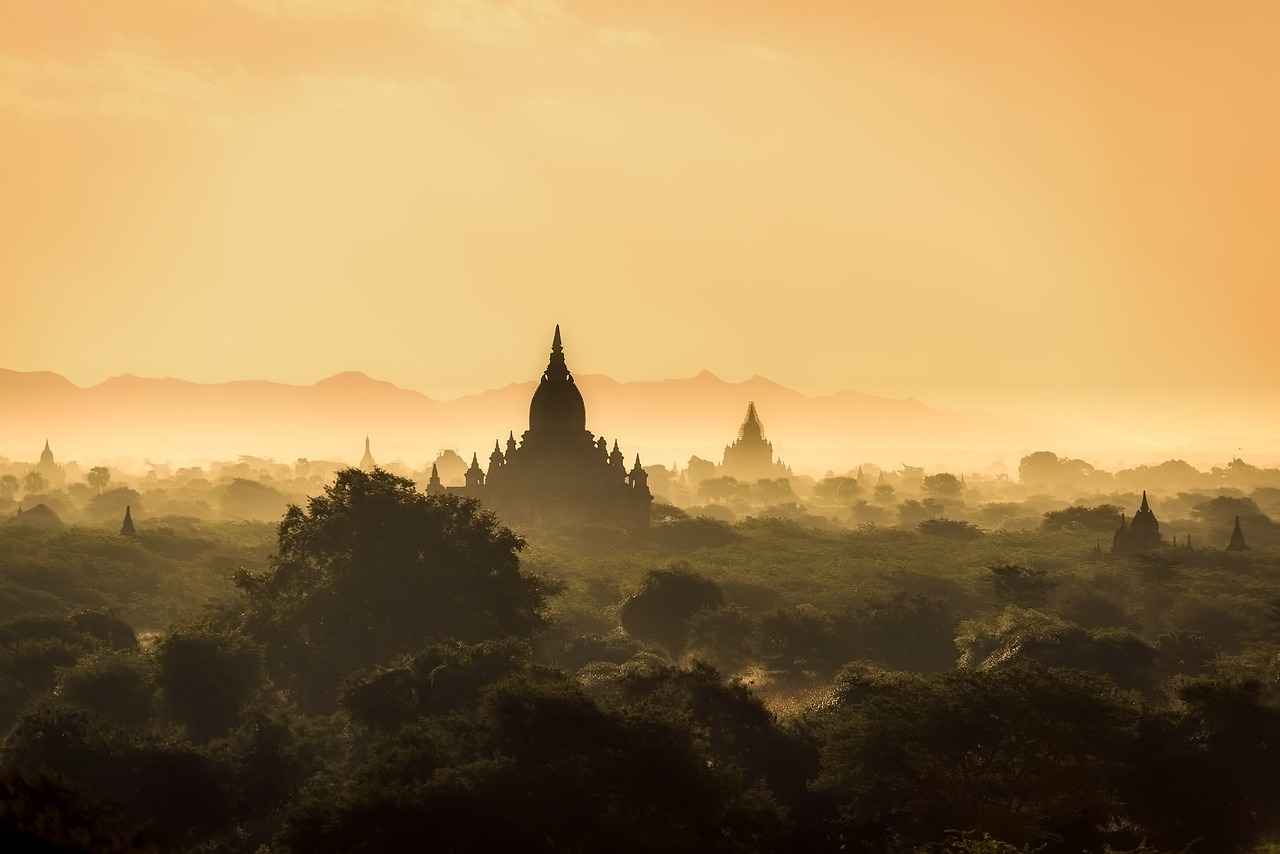
Literary Contributions of West Bengal
have played a pivotal role in shaping the cultural and intellectual landscape of India. This vibrant state has been a cradle for some of the most influential literary figures, whose works resonate deeply with themes of human experience, social justice, and cultural identity.
West Bengal’s literary tradition is rich and diverse, encompassing various forms such as poetry, novels, and essays. The state’s writers have explored a multitude of themes, from the struggles of the common man to the complexities of human emotions, often reflecting the socio-political realities of their time.
- Rabindranath Tagore: The first non-European Nobel laureate in Literature, Tagore’s works, including Gitanjali, delve into the essence of spirituality and humanity, influencing countless readers and writers.
- Sarat Chandra Chattopadhyay: Known for his poignant narratives, Chattopadhyay’s stories often highlight the challenges faced by the marginalized, making his work relatable and impactful.
- Bankim Chandra Chatterjee: His novel Anandamath is a cornerstone of Bengali literature, inspiring movements for independence and cultural resurgence.
- Mahasweta Devi: A contemporary voice, her writings focus on the plight of tribal communities, advocating for their rights and highlighting social injustices.
The contributions of these literary giants not only enriched Bengali literature but also left an indelible mark on Indian literature as a whole. Their works continue to inspire new generations, fostering a love for reading and critical thought among the populace.
In conclusion, the are a testament to the state’s rich cultural heritage. By engaging with diverse themes and social issues, these writers have shaped not only the literary landscape of India but also the very identity of its people.
Rabindranath Tagore
, a luminary in the world of literature, music, and philosophy, holds a unique position in the cultural landscape of India. As the first non-European to receive the Nobel Prize in Literature in 1913, Tagore’s contributions extend far beyond his literary achievements. His works have not only enriched the literary heritage of India but have also profoundly influenced the global literary scene.
Born in 1861 in Kolkata, Tagore was a multifaceted genius whose creativity spanned various genres. His poetry, often characterized by its lyrical beauty and depth, explores themes of love, nature, and spirituality. Works like Gitanjali resonate with readers, reflecting his philosophical outlook and deep connection to the human experience. Tagore’s ability to weave intricate emotions into his verses has made him a beloved figure in Indian literature.
In addition to poetry, Tagore was an accomplished musician and composer, creating over 2,000 songs, known as Rabindra Sangeet. These songs, infused with his poetic sensibilities, continue to be an integral part of Bengali culture, celebrated for their emotive power and melodic richness.
Tagore’s influence extends to the realm of education and social reform. He founded Visva-Bharati University in Santiniketan, which embodies his vision of a holistic education that fosters creativity and critical thinking. His advocacy for social justice and human rights resonates in his essays and public speeches, making him a significant voice in the socio-political discourse of his time.
In conclusion, Rabindranath Tagore’s legacy is a testament to the power of art and literature in shaping cultural identities. His works continue to inspire generations, bridging the gap between tradition and modernity, and reminding us of the universal truths that bind humanity together.
Sarat Chandra Chattopadhyay
is a pivotal figure in Bengali literature, whose works have left an indelible mark on the cultural landscape of India. His novels and stories reflect the struggles and aspirations of the common people, providing a lens through which readers can explore the societal issues and the human condition in early 20th-century India.
Born in 1876, Sarat Chandra’s writings are steeped in the realities of rural life and the complexities of human relationships. His ability to portray the emotional depth of his characters allows readers to connect with their experiences on a profound level. Through his narratives, he addresses themes such as poverty, gender inequality, and the struggle for identity, making his work relevant even today.
One of his most celebrated novels, “Palli Samaj”, delves into the lives of village folk, highlighting their challenges and dreams. His characters are often depicted as ordinary individuals facing extraordinary circumstances, which resonates deeply with readers. This authentic representation of life’s trials and tribulations has earned him a dedicated following.
Chattopadhyay’s writing style is marked by its simplicity and clarity, making it accessible to a wide audience. He masterfully weaves local dialects and cultural references into his stories, enriching the narrative and providing a sense of place. This approach not only enhances the authenticity of his work but also preserves the linguistic heritage of Bengal.
In conclusion, remains a towering figure in Indian literature, whose works continue to inspire generations. His focus on the human experience and societal issues ensures that his stories are timeless, reflecting the enduring spirit of the common man.

Festivals Celebrated in West Bengal
are a vibrant tapestry of traditions, beliefs, and community spirit, reflecting the rich cultural heritage of the region. Each festival is a celebration of life, bringing together people of all ages and backgrounds in joyous unity. This article delves into the most significant festivals, highlighting their importance and the unique customs associated with them.
- Durga Puja: Often regarded as the crown jewel of Bengali festivals, Durga Puja is a ten-day celebration that honors the goddess Durga’s victory over the buffalo demon Mahishasura. The festival features stunning artistic pandals (temporary structures) adorned with intricate decorations, cultural performances, and community feasts. The atmosphere is electric, with streets filled with music, dance, and vibrant processions.
- Poila Boishakh: Marking the Bengali New Year, Poila Boishakh is celebrated with enthusiasm and fervor. Families come together to prepare traditional dishes, wear new clothes, and participate in cultural events. This festival symbolizes renewal and hope, as people engage in rituals to welcome prosperity and happiness in the coming year.
- Poush Mela: Held in the month of Poush, this fair celebrates the harvest season. It is a showcase of local crafts, traditional music, and dance. The Poush Mela is a platform for artisans to display their skills, and visitors can enjoy a variety of Bengali delicacies and sweets, making it a delightful experience for all.
- Jagaddhatri Puja: Celebrated mainly in the city of Chandannagar, this festival honors the goddess Jagaddhatri. The rituals and processions are marked by elaborate decorations and cultural performances, attracting thousands of devotees and tourists alike.
- Vasant Utsav: This spring festival celebrates the arrival of warmer weather and is characterized by vibrant colors, music, and dance. It is a time for the community to come together and celebrate nature’s beauty through various cultural programs.
In conclusion, the festivals of West Bengal are not just events; they are a reflection of the region’s rich cultural fabric, showcasing its traditions, art, and community spirit. Each festival offers a glimpse into the heart of Bengali culture, making them an integral part of India’s diverse identity.
Durga Puja
is not just a festival; it is a vibrant celebration that encapsulates the essence of West Bengal’s cultural identity. This grand event, dedicated to the worship of the goddess Durga, marks the triumph of good over evil and is observed with immense fervor and enthusiasm. Every year, millions of people gather to partake in this extraordinary festival, which is renowned for its elaborate rituals and artistic displays.
The festival typically spans over ten days, with the most significant celebrations occurring during the last four days. During this time, elaborate decorations and artistic pandals (temporary structures) are erected, showcasing intricate designs that reflect both traditional and contemporary themes. Each pandal tells a unique story, often inspired by mythology, social issues, or current events, attracting visitors from all walks of life.
One of the most striking features of is the cultural performances that take place throughout the festival. These performances include traditional music, dance, and theatrical presentations, highlighting the rich artistic heritage of the region. Local artists often collaborate to create stunning displays and performances that captivate audiences, reinforcing the community spirit.
| Days of Celebration | Activities |
|---|---|
| Day 1: Mahalaya | Invocation of the goddess Durga |
| Day 2: Shashthi | Unveiling of the idol and rituals begin |
| Day 3: Maha Saptami | Celebration of the goddess’s arrival |
| Day 4: Maha Ashtami | Major rituals and cultural performances |
| Day 5: Vijaya Dashami | Immersion of the idol and conclusion of festivities |
Moreover, serves as a platform for social gatherings, where families and friends come together to celebrate. It fosters a sense of unity and belonging among the community, transcending barriers of class and religion. The festival also plays a significant role in promoting local artisans and craftsmen, as many of the decorations and idols are created by skilled local artists.
In conclusion, is a testament to the rich cultural tapestry of West Bengal, embodying the spirit of community and artistic expression. As the festival continues to evolve, it remains a vital part of India’s cultural heritage, drawing attention from around the globe and showcasing the beauty of Bengali traditions.
Poila Boishakh
, the Bengali New Year, is a vibrant celebration that marks the beginning of the Bengali calendar. This joyous occasion is not just a day of festivity; it represents a renewal of spirit and a time for the community to come together in celebration of their rich cultural heritage. The festival typically falls on April 14th or 15th, depending on the lunar calendar, and is celebrated with great enthusiasm across West Bengal and among Bengali communities worldwide.
One of the most delightful aspects of is the array of traditional foods that are prepared and shared among families and friends. Dishes like Panta Bhat (fermented rice), Hilsa fish curry, and a variety of sweets such as Rasgulla and Sandesh are integral to the celebrations. These culinary delights not only tantalize the taste buds but also symbolize the abundance and prosperity that the New Year is expected to bring.
Music and dance are also central to the festivities, with folk songs and traditional dances filling the air. People often dress in colorful attire, showcasing the vibrant fabrics and styles of Bengali culture. Community gatherings take place in homes and public spaces, where individuals engage in cultural performances, games, and storytelling, reinforcing the bonds of community and tradition.
Furthermore, serves as a reminder of the importance of cultural identity among the Bengali people. It is a time to reflect on the past, celebrate the present, and look forward to the future with hope and enthusiasm. The festival embodies the spirit of renewal and cultural pride, making it a significant event in the Bengali calendar that resonates deeply within the hearts of those who celebrate it.
In conclusion, Poila Boishakh is not just a New Year’s celebration; it is a profound expression of Bengali culture and heritage. Through its rich traditions, delectable cuisine, and communal spirit, it continues to inspire generations, fostering a sense of belonging and cultural continuity.

West Bengal’s Culinary Heritage
is a vibrant tapestry of flavors, aromas, and traditions that reflect the region’s rich agricultural landscape and cultural diversity. The food of West Bengal is not just about nourishment; it is an integral part of the Bengali identity, deeply intertwined with festivals, family gatherings, and everyday life.
The staple of Bengali cuisine is rice, which is often accompanied by a variety of fish and vegetables. The abundance of rivers and water bodies in the region has made fish a primary source of protein, with dishes like Macher Jhol (fish curry) and Shorshe Ilish (hilsa fish in mustard sauce) being quintessential. These dishes are characterized by their use of mustard oil and a medley of spices, creating a unique flavor profile that is both aromatic and delicious.
Moreover, the culinary landscape is enriched by an array of spices such as cumin, coriander, and turmeric, which are skillfully blended to enhance the natural flavors of the ingredients. The use of panch phoron, a traditional five-spice mix, is a hallmark of Bengali cooking, adding depth and complexity to many dishes.
Another noteworthy aspect of West Bengal’s culinary heritage is its famed sweets. Bengali sweets, such as Rosogolla and Sandesh, are celebrated not just for their taste but also for their cultural significance. These desserts symbolize the warmth and hospitality of the Bengali people and are often served during festivals and special occasions.
In summary, West Bengal’s culinary heritage is a delicious blend of flavors and traditions, showcasing the region’s agricultural abundance and cultural influences. Each dish tells a story, making Bengali cuisine a vital part of India’s diverse culinary landscape.
Signature Dishes
The culinary landscape of West Bengal is a vibrant tapestry woven with rich flavors and traditional recipes that reflect the region’s cultural heritage. The state’s cuisine is deeply influenced by its geography, agricultural practices, and historical interactions with various cultures. Among the many dishes that define West Bengali cuisine, a few signature dishes stand out, showcasing the unique culinary traditions and flavors that have been passed down through generations.
- Macher Jhol: This traditional fish curry is a staple in Bengali households. It is typically made with fresh river fish, such as rohu or catla, and is cooked in a light gravy infused with spices like turmeric, cumin, and coriander. The dish is often served with steamed rice, making it a comforting meal that highlights the region’s love for fish.
- Shorshe Ilish: Considered the crown jewel of Bengali cuisine, Shorshe Ilish features hilsa fish cooked in a rich mustard sauce. The dish balances the natural oiliness of the fish with the pungent and flavorful mustard paste, creating a mouthwatering experience that is cherished by locals and food enthusiasts alike. It is often enjoyed during special occasions and festivals.
- Mishti Doi: This sweet yogurt dessert is a beloved treat in West Bengal. Made from thickened milk and sweetened with jaggery or sugar, Mishti Doi is often flavored with cardamom and served chilled. Its creamy texture and delightful sweetness make it a perfect ending to a traditional Bengali meal.
These signature dishes not only tantalize the taste buds but also tell a story of West Bengal’s rich culinary heritage. They embody the essence of Bengali hospitality and the region’s commitment to using fresh, local ingredients. Whether enjoyed at home or in a restaurant, these dishes are a testament to the cultural identity of West Bengal and its enduring love for food.
Influence of Bengali Sweets
Bengali sweets are more than just delightful treats; they serve as cultural symbols that embody the rich heritage and hospitality of the Bengali people. Among the most famous sweets are Rosogolla and Sandesh, each with its own unique history and significance.
Rosogolla, a spongy, syrup-soaked ball made from chhena (fresh cheese), is celebrated for its lightness and sweetness. Its origins trace back to the state of Odisha, but it has become a quintessential part of Bengali cuisine. The preparation of Rosogolla is an art form in itself, requiring skillful hands and a deep understanding of the ingredients. This sweet is often served during festivals and family gatherings, symbolizing joy and togetherness.
Sandesh, on the other hand, is a sophisticated sweet made from fresh chhena, often flavored with cardamom or saffron and sometimes garnished with slivers of pistachio. This delicacy reflects the artistry of Bengali sweet makers, who create intricate designs that are as pleasing to the eye as they are to the palate. Sandesh is often gifted during special occasions, showcasing the warmth and generosity of Bengali hospitality.
The significance of these sweets extends beyond their taste. They represent the cultural identity of West Bengal, where each sweet is crafted with care and tradition. The preparation and sharing of these desserts during festivals like Durga Puja and Poila Boishakh reinforce community bonds and celebrate the region’s rich culinary heritage.
In conclusion, Bengali sweets are not merely desserts; they are a testament to the creativity and hospitality of the Bengali culture. Their influence can be seen in the way they bring people together, making them an integral part of the social fabric of West Bengal.

Music and Dance Forms of West Bengal
Music and dance are vital components of the cultural identity of West Bengal, reflecting the region’s rich heritage and artistic expression. The diverse forms of music and dance not only entertain but also embody the historical and social narratives of the Bengali people.
West Bengal is renowned for its folk traditions, which are deeply rooted in the daily lives and rituals of its communities. One of the most celebrated forms is Baul music, characterized by its soulful melodies and philosophical lyrics. Bauls, the wandering minstrels, convey messages of love, spirituality, and the quest for truth through their songs. This music often serves as a medium for social commentary, addressing various issues faced by rural communities.
In addition to folk music, West Bengal boasts a rich heritage of classical dance forms. Dances such as Kathak and Odissi have found a significant presence in the state. These classical forms incorporate intricate footwork, expressive gestures, and storytelling, often depicting mythological themes and local legends. The fusion of traditional techniques with contemporary narratives has enriched the performing arts landscape, making it vibrant and accessible to new audiences.
The annual Durga Puja festival exemplifies the integration of music and dance in cultural celebrations. During this time, elaborate performances and musical gatherings take place, showcasing the talent of local artists and fostering a sense of community. This festival not only highlights the artistic expressions of West Bengal but also emphasizes the importance of cultural continuity and the celebration of life.
In conclusion, the music and dance forms of West Bengal are not merely artistic expressions but are intertwined with the region’s cultural identity. They serve as a testament to the resilience, creativity, and communal spirit of the Bengali people, ensuring that their rich traditions continue to thrive in a rapidly changing world.
Baul Music
is a unique and profound genre that captures the essence of rural Bengal, intertwining spirituality and philosophy through its melodies and lyrics. This musical tradition is not merely an art form; it serves as a reflection of the cultural ethos of the region, resonating deeply with the lives and beliefs of the people.
The Bauls, who are often recognized as wandering minstrels, embody a rich tradition that transcends mere entertainment. Their songs often explore themes of love, devotion, and the quest for truth. These lyrical compositions are typically performed at various festivals and gatherings, creating a vibrant atmosphere filled with community spirit and shared experiences.
One of the most captivating aspects of Baul music is its ability to blend folk traditions with profound philosophical insights. The lyrics often challenge societal norms and encourage listeners to seek inner peace and understanding. This makes Baul music not just a form of entertainment, but a spiritual journey that invites introspection and connection to the divine.
Instruments commonly used in Baul performances include the ektara (a one-stringed instrument) and the duggu (a type of drum), which contribute to the distinctive sound that characterizes this genre. The rhythmic patterns and soulful melodies create an immersive experience that captivates audiences, both young and old.
As the world becomes increasingly globalized, Baul music continues to evolve, attracting attention beyond the borders of Bengal. Artists are now experimenting with fusion genres, incorporating modern elements while still honoring traditional roots. This evolution ensures that Baul music remains relevant and continues to inspire future generations.
In conclusion, Baul music stands as a testament to the rich cultural heritage of West Bengal, offering a unique blend of melody, philosophy, and spirituality. Its enduring appeal lies in its ability to connect deeply with individuals, fostering a sense of community and shared identity.
Classical Dance Forms
in West Bengal are not just art forms; they are a celebration of culture, history, and the human experience. Among these, Kathak and Odissi stand out as prominent classical dance styles that have found a unique expression in this vibrant region. These dance forms have not only retained their traditional techniques but have also embraced local narratives, thus enriching the performing arts landscape of West Bengal.
Kathak, originating from North India, is characterized by its intricate footwork, expressive gestures, and storytelling through dance. In West Bengal, Kathak has evolved to incorporate local themes and folklore, making it resonate deeply with the audience. Performers often weave in elements of Bengali culture, using regional music and narratives that reflect the socio-cultural fabric of the state.
On the other hand, Odissi, one of the oldest classical dance forms in India, hails from the temple traditions of Odisha. In West Bengal, Odissi has been embraced by many dance schools and practitioners who emphasize its graceful movements and spiritual essence. The dance often narrates stories from Hindu mythology, but West Bengal’s rendition includes local tales and contemporary themes, bridging the past and present.
The fusion of these classical forms with local narratives not only preserves their authenticity but also makes them accessible and relatable to the people of West Bengal. This cultural amalgamation fosters a sense of identity and pride among the performers and the audience alike.
Moreover, festivals and cultural events in West Bengal provide a platform for these classical dance forms to flourish. Events such as Durga Puja and Poila Boishakh often feature performances that highlight the beauty and intricacies of Kathak and Odissi, drawing crowds from all over the country and beyond.
In conclusion, the classical dance forms of Kathak and Odissi in West Bengal exemplify a beautiful blend of tradition and local culture. This fusion not only enriches the performing arts but also plays a crucial role in shaping the cultural identity of the region, making it a significant part of India’s diverse artistic heritage.

Modern Influences and Globalization
In the contemporary world, West Bengal’s culture is undergoing a remarkable transformation. This evolution is characterized by a harmonious blend of traditional practices and modern influences. As globalization continues to shape societies, West Bengal stands out for its ability to adapt while preserving its rich cultural heritage.
One of the most significant aspects of this cultural evolution is the integration of global art forms into local practices. Artists in West Bengal are increasingly experimenting with contemporary mediums, such as digital art, which allows them to express their cultural narratives in innovative ways. This fusion not only attracts local audiences but also garners international attention, showcasing the region’s artistic diversity.
Moreover, the culinary scene in West Bengal reflects this dynamic change. While traditional dishes like Macher Jhol and Mishti Doi remain popular, chefs are now incorporating global flavors and techniques. This culinary experimentation has led to the emergence of unique fusion dishes that appeal to a broader audience, thus enhancing the region’s gastronomic identity.
Festivals, too, have evolved in response to modern influences. While traditional celebrations like Durga Puja continue to thrive, there is a noticeable incorporation of contemporary themes and global cultural elements. For instance, the use of technology in creating immersive experiences during festivals has attracted younger generations, bridging the gap between tradition and modernity.
In conclusion, West Bengal’s culture is a vibrant tapestry that reflects its historical roots while embracing the challenges and opportunities of globalization. This dynamic cultural identity not only resonates locally but also establishes a significant presence on the global stage, making West Bengal a vital contributor to India’s cultural mosaic.
Contemporary Art Scene
The Contemporary Art Scene in West Bengal is a dynamic and evolving landscape that reflects the region’s rich cultural heritage while embracing innovative practices. Artists in West Bengal are not only preserving traditional forms but are also experimenting with modern techniques and themes, leading to a vibrant artistic dialogue that resonates locally and globally.
This artistic movement is characterized by a fusion of various mediums, including painting, sculpture, installation, and digital art. Artists are increasingly exploring concepts that address contemporary societal issues such as identity, gender, and environmental concerns. The works produced often serve as a mirror to the changing dynamics of society, showcasing how art can be a powerful tool for social commentary.
One notable aspect of the contemporary art scene is the emergence of art collectives and galleries that support local talent. These platforms provide artists with the opportunity to showcase their work, engage with the public, and collaborate with peers. Events such as art fairs and exhibitions are regularly held, attracting both local and international audiences, thereby enhancing the visibility of West Bengal’s artistic contributions.
Furthermore, the influence of global art trends is evident in the works of many West Bengal artists. They are incorporating international styles and themes while maintaining a strong connection to their cultural roots. This blend of local and global influences not only enriches their art but also helps in creating a unique identity that stands out on the world stage.
In conclusion, the contemporary art scene in West Bengal is a testament to the region’s creative spirit and resilience. As artists continue to push boundaries and explore new horizons, they play a crucial role in shaping the cultural narrative of India. The ongoing evolution of this scene promises to keep the vibrancy of West Bengal alive for generations to come.
Global Recognition of Bengali Culture
has become a significant phenomenon in recent years, as the rich traditions and artistic expressions of West Bengal are increasingly appreciated on international platforms. This recognition is primarily driven by the region’s profound contributions to literature, film, and art, which not only reflect the cultural heritage of Bengal but also foster cross-cultural exchanges.
The literary landscape of Bengal boasts a legacy of renowned figures such as Rabindranath Tagore and Sarat Chandra Chattopadhyay, whose works have transcended geographical boundaries. Tagore, in particular, has left an indelible mark on global literature, with his poetry and songs resonating with audiences far beyond India. His Nobel Prize in Literature in 1913 was a pivotal moment that brought Bengali literature to the forefront of the global literary scene.
In addition to literature, Bengali cinema has gained acclaim, with filmmakers like Satyajit Ray and Ritwik Ghatak showcasing the region’s rich narrative style and artistic depth. Their films often explore complex social issues, providing a window into the cultural psyche of Bengal while appealing to international audiences.
The visual arts of West Bengal, including traditional crafts and contemporary art, further enhance the region’s global presence. Artists are increasingly experimenting with various mediums, blending traditional techniques with modern themes, thus creating a dynamic art scene that attracts attention from art lovers worldwide.
Moreover, the vibrant festivals of West Bengal, such as Durga Puja, have become cultural spectacles that draw visitors from around the globe. These celebrations not only showcase the artistic talents of the region but also promote cultural tourism, contributing to a broader understanding and appreciation of Bengali culture.
In conclusion, the global recognition of Bengali culture is a testament to its rich heritage and the ongoing efforts of its artists and writers to share their stories with the world. As cross-cultural exchanges continue to flourish, the contributions of West Bengal to the broader cultural narrative of India will undoubtedly remain significant and influential.
Frequently Asked Questions
- What are the key cultural influences of West Bengal?
West Bengal’s culture is shaped by its rich history, including colonial influences, traditional art forms, and a vibrant literary scene. The region’s festivals, cuisine, and music also play a significant role in its cultural identity.
- How does West Bengal’s art reflect its heritage?
The art of West Bengal, including terracotta and Kantha embroidery, showcases the region’s craftsmanship and creativity. These art forms often tell stories of local traditions and have evolved to remain relevant in contemporary society.
- Why is Durga Puja so important to West Bengal?
Durga Puja is the most significant festival in West Bengal, representing community spirit and cultural pride. The elaborate decorations and cultural performances attract visitors and embody the essence of Bengali identity.
- What are some signature dishes from West Bengal?
Signature dishes like Macher Jhol (fish curry), Shorshe Ilish (hilsa fish in mustard sauce), and Mishti Doi (sweet yogurt) highlight the unique flavors of West Bengal’s culinary heritage, which is rich in spices and fresh ingredients.
- How has globalization affected West Bengal’s culture?
Globalization has introduced modern influences to West Bengal’s culture while allowing it to retain its rich traditions. This dynamic interplay has led to a contemporary art scene that reflects both local narratives and global themes.
























































